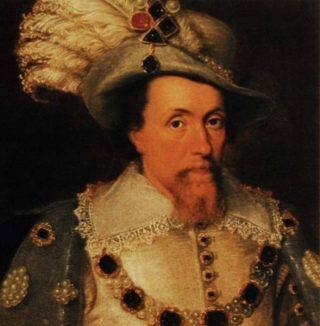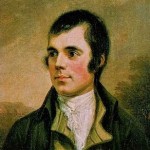Cock Up Your Beaver/“Johnny Lad” is a traditional song located in the northern counties of Scotland and especially in the Lowlands (in particular in Aberdeenshire), but also widespread in Ireland and Cape Breton. There are many text versions combined with different melodies.
Cock Up Your Beaver/“Johnny Lad” è una canzone tradizionale popolare nelle contee settentrionali della Scozia e soprattutto nelle Lowlands (in particolare nell’Aberdeenshire), ma diffusa anche in Irlanda e a Capo Bretone. Esistono molte versioni testuali abbinate a diverse melodie.
Johnny Lad (street ballad/ nursery song version)
Jinkin’ You, Johnnie Lad (bothy ballad)
Cock Up Your Beaver (Robert Burns)
Hey how Johnie Lad (Robert Burns)
Och, Hey! Johnnie, Lad (Robert Tannahill)
THE TUNE
Johnny cock thy beaver is a dancing tune, first published in 1686 in the “Dancing Master” by John Playford and still today a favourite tune by the early music groups (other titles: “Horse and Away to Newmarket Races”, “Fenwick of Bywell”, “Gary Owen”, “Galloping over the Cow Hill”) and even Tourlough O’Carolan made his arrangement known as “Carolan’s Variations on the Scottish Air “Cock Up Your Beaver”
La Melodia
Johnny cock thy beaver è una melodia da danza trascritta da John Playford nel suo “The English Dancing Master (1686); ancora oggi è una melodia in repertorio tra i gruppi di musica antica. (altri titoli: “Horse and Away to Newmarket Races”, “Fenwick of Bywell”, “Gary Owen”, “Galloping over the Cow Hill”). Già un’ampia serie di variazioni sull’antica melodia scozzese erano state riportate nelle sue precedenti raccolte ”The Division Violin” e “The Division Flute” (1684-1685) e lo stesso Tourlough O’Carolan ne fece un suo arrangiamento per arpa in stile barocco
A FASHIONED BEAVER
Beaver is a generic term that indicates the felt hat with beaver fur, but the model changes according to the fashions.
Beaver fur felt is of higher quality than wool felt, more resistant, with a vivid color and rich in luster, but also more expensive.
In the sixteenth century the hat with wide and soft brims (like that of the Three Musketeers for instance) triumphs with plenty of feathers, buckles and ribbons.
It was Louis XIV to start a trend of the “three cornered hat” at the end of the seventeenth century, which will be in fashion throughout the eighteenth century, the hat that in our imagination is the pirate one par excellence! It was also called “Cocked” hat, because the sides were folded (cocked up) to give it the shape.

In the nineteenth century, fashion changed radically and beaver became synonymous with top hat!
UN BEAVER ALLA MODA
Beaver è un termine generico che indica il cappello in feltro con pelo di castoro, ma il modello cambia a seconda delle mode.
Il feltro di pelo di castoro è di qualità superiore rispetto al feltro di lana, più resistente, dal colore vivido e ricco di lucentezza, ma anche più costoso.
Nel XVI secolo trionfa il cappello ad ampie e morbide falde (come quello dei Tre Moschettieri per intenderci) con abbondanza di piume, fibbie e nastri.
Fu Luigi XIV a lanciare la moda del tricorno (in inglese “tricorne” o “three cornered hat”) sul finire del Seicento, che sarà di moda per tutto il Settecento, quello che nel nostro immaginario è il cappello del pirata per antonomasia! Era detto anche “Cocked” hat, perchè i lati erano piegati (cocked up) per dargli la forma.
Vediamo nella figura a lato un beaver alla moda seicentesca in testa a Giacomo Stuart (incoronato nel 1603 re d’Inghilterra con il titolo di Giacomo I e già re di Scozia con il nome di Giacomo VI) guarnito da un vistoso piumaggio e riccamente ingioiellato.

Nell’Ottocento la moda cambia radicalmente e beaver diventa sinonimo di cappello a cilindro!
COCK UP YOUR BEAVER BY ROBERT BURNS
In the first stanza the song takes up the fragment by Herd (in Scots Songs, 1769) while the second stanza was written entirely by Robert Burns: the original text ridiculed the Scottish gentlemen who followed their London King James VI, who became James I of England in 1603, and yet the Scots trasformed it into a jacobite song. Burns sends it to Johnson for publication in the SMM (1792). James Hogg reported his version (in the Jacobite Songs and Ballads of Scotland from 1688 to 1746-) and rewrote a good part of it even though he noted it as a “clever old song”

La canzoncina riprende nella prima strofa il testo già riportato in forma di frammento da Herd (in Scots Songs, 1769) mentre la seconda strofa è stata scritta interamente da Robert Burns: il testo originale metteva in ridicolo i gentiluomini scozzesi che seguirono a Londra il loro re Giacomo VI, diventato nel 1603 Giacomo I d’Inghilterra, e tuttavia gli scozzesi lo trasformarono in una canzone jacobita.
Burns la invia a Johnson per la pubblicazione nello SMM (1792). Pure James Hogg riportò la sua versione (in Jacobite Songs and Ballads of Scotland from 1688 to 1746,- 1821) e ne riscrisse buona parte anche se la annotò come una “clever old song“
I
When first my brave Johnie lad came to this town (1),
He had a blue bonnet (2) that wanted the crown (3);
But now he has gotten a hat and a feather,
Hey, brave Johnie lad, cock up your beaver (4)!
II
Cock up your beaver, and cock it fu’ sprush, (5)
We’ll over the Border (6), and gie them a brush;
There’s somebody there we’ll teach better behaviour,
Hey, brave Johnie lad, cock up your beaver!
NOTE
french translation
(1) This is the delegation of nobles, dignitaries and soldiers following the new king who moves from Edinburgh to London
(2) the blue bonnet is the rustic scottish cap. The blue bonnet style dates back in 1500 and the custom of wearing it gave the Highlanders the nickname of ‘Bluebonnets’. In ancient times it was knitted, then made of wood felt sewn on a lower border obtained from a rigid checkered ribbon or in solid color, tied tightly around the forehead with the ends left hanging freely or knotted in a bow (a code language for the girls: in the first case the young man was free and handy, in the second case he was engaged). It embellishes with a feather and the cockade (on the left side) The Irish variant takes the name of Irish Caubeen. (see more)
(4) In the original meaning the phrase was an exhortation to wear a hat (beaver = beaver) according to fashion, thus emphasizing the lack of taste of the new arrivals; in the Jacobite code, on the other hand, it is an exhortation to go to England to straighten things out (and re-establish the legitimate king of the Stuart household)
(5) “Sprush” =”spruce” each clan has a distinctive branch. In the 1700s the Scottish Bonnet is embellished with a white cockade, the clan emblem and a feather
(6) the border territory between Scotland and England
Traduzione italiana di Cattia Salto
I
Quando per la prima volta il mio audace Johnny arrivò in città
aveva un berretto blu (portato di) piatto;
ma ora indossa un cappello con la piuma.
Ehi bel Johnny raddrizza il tuo cappello
II
Raddrizza il tuo cappello, e ornalo con un rametto
passeremo il Border e daremo una ripassata (agli Inglesi);
c’è qualcuno là a cui insegneremo le buone maniere
Ehi bel Johnny raddrizza il tuo cappello!
NOTE
(1) Si tratta della delegazioni di nobili, dignitari e soldati al seguito del nuovo re che da Edimburgo si trasferisce a Londra
(2) il blue bonnet è il rustico berretto scozzese. La foggia del blu bonnet risale al 1500 e l’usanza di portarlo ha dato il soprannome di ‘Bluebonnets’ agli Highlanders. Anticamente era lavorato ai ferri, poi realizzato in feltro di lana cucito su un bordo inferiore ricavato da un nastro rigido a quadretti oppure in tinta unita, legato stretto intorno alla fronte con le estremità lasciate pendere liberamente oppure annodate in un fiocco (un linguaggio in codice per le ragazze: nel primo caso il giovanotto era libero e disponibile, nel secondo caso era fidanzato). Si abbellisce con una piuma e la coccarda (sul lato sinistro) La variante irlandese prende il nome di Irish Caubeen (continua)
(3) forse una frase a doppio senso, letteralmente “che voleva la corona” crown in questo contesto è la corona piatta e voluminosa del berretto= berretto portato di piatto
(4) Nel significato originario la frase era un esortazione ad indossare il cappello (beaver= castoro) secondo la moda, sottolineando così la mancanza di gusto dei nuovi arrivati; nella lettura in chiave giacobita invece è un’esortazione ad andare in Inghilterra per raddrizzare le cose (e rimettere sul trono il legittimo re della casa Stuart)
Cock up your beaver in senso letterale=”piega la falda del tuo castoro”
(5) ogni clan ha un rametto distintivo. Nel 1700 lo Scottish Bonnet è abbellito da coccarda bianca, l’emblema del clan e una piuma
(6) il Border è il territorio di marca lungo il confine Scozia-Inghilterra
“Cock up your Beaver” -David Herd
When first my dear Johny came to this town,
he had a blue bonnet, it wanted the crown;
but now he has gotten a hat and a feather,
Hey, my Johny lad, cock up your beaver.
Cock up your beaver, cock up your beaver,
Hey, my Johny lad, cock up your beaver;
cock up your beaver, and cock it nae wrong,
we’ll a’ to England ere it be lang.
Quando per la prima volta il caro Johnny arrivò in città
aveva un berretto blu portato di piatto,
ma ora indossa un cappello e la piuma
Ehi mio Johnny raddrizza il tuo cappello,
raddrizza il tuo cappello
Ehi mio Johnny raddrizza il tuo cappello
raddrizza il tuo cappello e mettilo bene,
saremo in Inghilterra in men che non si dica
“Cock up your Beaver” -James Hogg
In Hogg’s stanza (probably in his own hand) the “style” with which the hat was to be worn, is descripted more precisely, in fact the Scots dressedd the blue bonnet so that it fell down on the right side.
III stanza
Cock it up right, and fauld it nae down,
And cock the white rose on the band o’ the crown;
Cock it o’ the right side, no on the wrang,
And yese be at Carlisle or it be lang.
Nei versi di Hogg (probabilmente di suo pugno) viene sviluppato più precisamente lo “stile” con cui si doveva portare il cappello: gli scozzesi infatti portavano il blu bonnet in modo che ricadesse verso il basso sul lato destro. v
III strofa
Portalo bene e non piegarlo troppo verso il basso e porta la rosa bianca sulla fascia della corona [coppola]
inclinano sul lato destro, non su quello sbagliato
e saremo a Carlise in men che non si dica
LINK
http://mudcat.org/thread.cfm?threadid=24649
http://www.mandolincafe.com/forum/showthread.php?96753-Johnny-Cock-Thy-Beaver-(Baroque-variations-1684)
http://bookkake.com/2009/12/07/cock-up-yer-beaver/
http://www.ibiblio.org/fiddlers/CO_COLL.htm
http://www.janeausten.co.uk/beaver-hats-build-a-nation/
http://ilblogdichiaraoscura.blogspot.com/2016/04/cronaca-matto-come-un-cappellaio-john.html
http://chrsouchon.free.fr/johnlad.htm
